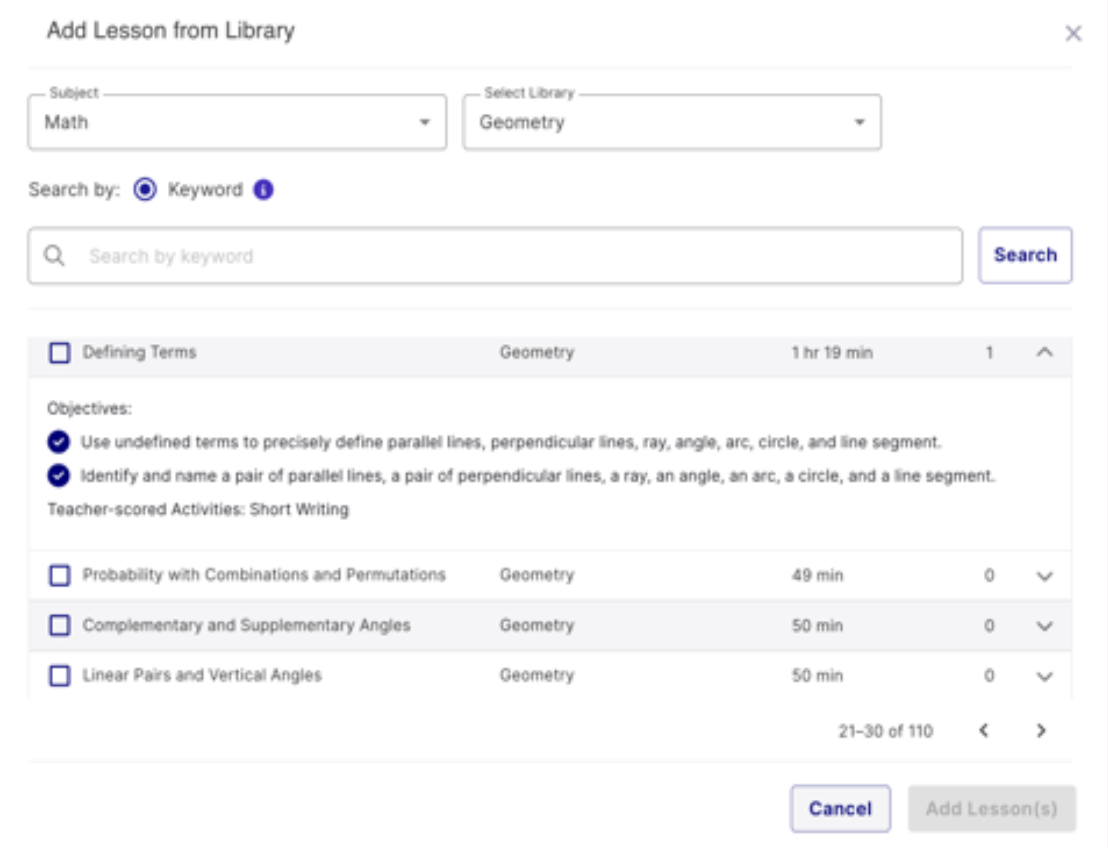Bulk Edit or Delete Students in Imagine Language & Literacy
September 2024
Streamlining the rostering process
Rostering students just got easier. Administrators can now bulk edit or delete students within the portal. Learn more here.
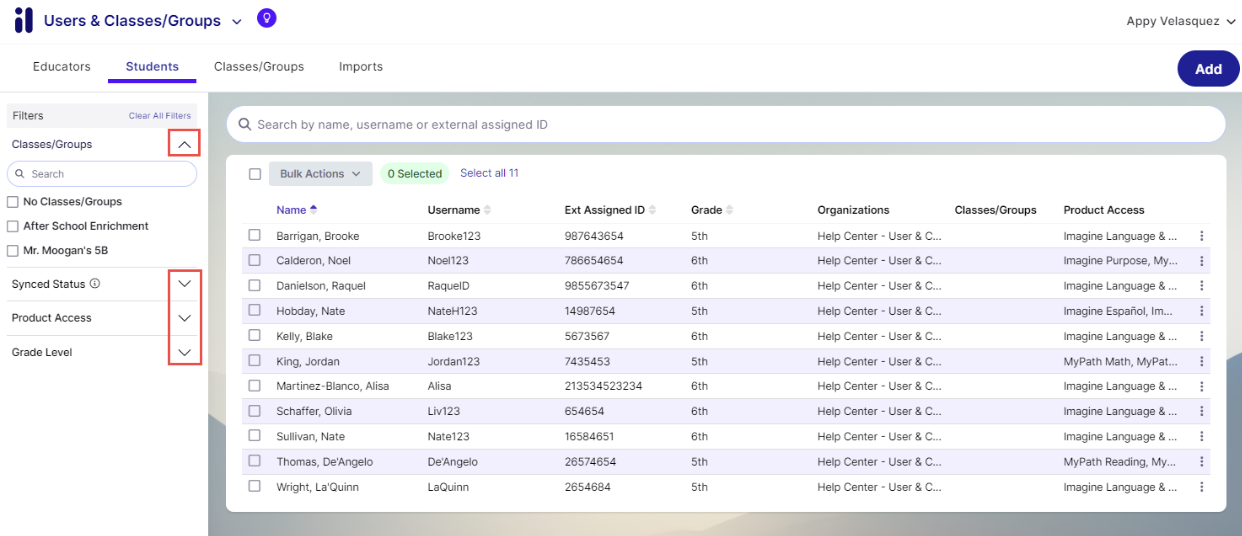
September 2024
Rostering students just got easier. Administrators can now bulk edit or delete students within the portal. Learn more here.

September 2024
Ten new or updated guides have been added as in-product support to give guidance on everything from lab safety to culturally and linguistically responsive teaching — giving educators more tools to implement Twig Science effectively and with purpose.
Find the guides listed below in Review > Review Program > Resources
Find the guides listed below in Grade Level Resources under 3-D Assessments
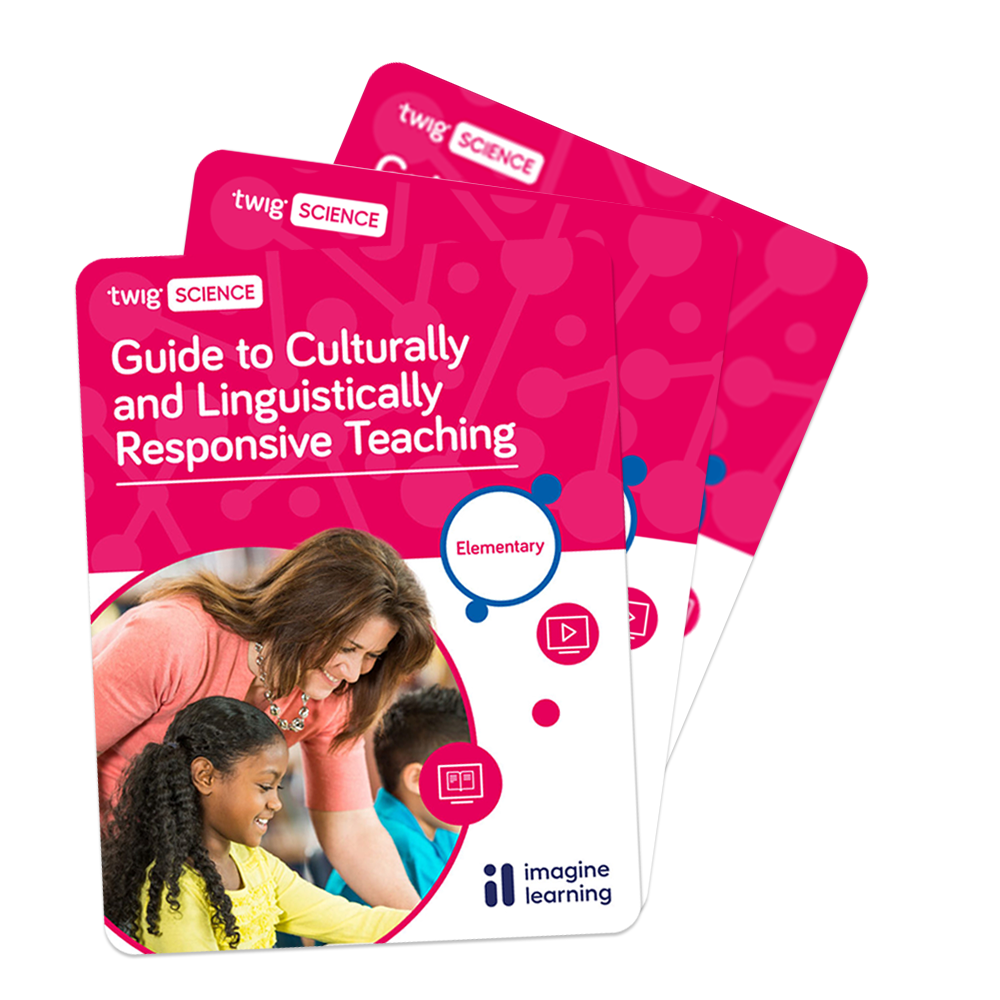
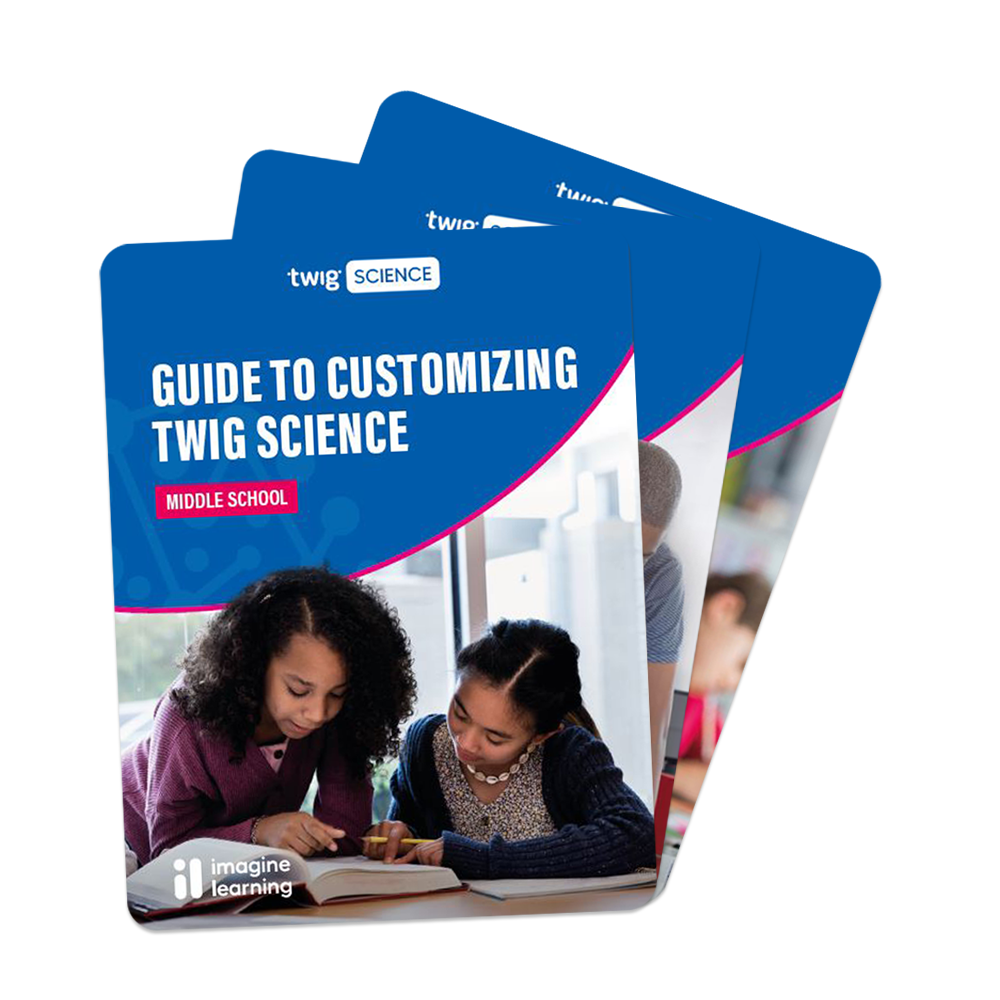
September 2024
Hands-on investigations are even better for educators with brand new videos that not only explain and show what comes in all their science kits, but also videos that demonstrate how to create some of the items needed for the investigations. Videos are located in the Digital Resources area of the Prep Section for educators under the Session Level.
We will continue to release new videos on a rolling basis, and we’ll let you know as they become available!

September 6, 2024 9:00 am
Published by: Business Insider
Education is evolving with developments in adaptive-learning technology. These tools collect and use data on each student’s performance, progress, and learning style to tailor the learning experience to their proficiency and needs.
May include subscriber-only content
September 5, 2024 9:15 am
Expanding Opportunity and Access for Learners, Empowering Teachers with Innovative AI Tools
Tempe, Arizona — September 5, 2024 — As the 2024–2025 academic year begins, Imagine Learning announces new products and services, along with extensive updates across its comprehensive portfolio. In response to the evolving needs of K–12 students and educators, Imagine Learning has broadened its curriculum offerings, enhanced existing products, and delivered more flexible learning options. With a focus on expanding opportunity and access for learners, while making teachers’ lives easier by leveraging innovative AI tools, Imagine Learning continues to set a new standard in today’s classrooms.
Expanding High-Quality Core Curriculum Solutions to Prepare Future-Ready Students
Imagine Learning’s growing portfolio of core curriculum solutions brings learning to life through research-backed pedagogy and seamless, time-saving supports for teachers as they prepare students for an increasingly complex world. As a premium Certified Partner of Illustrative Mathematics, the leading problem-based K–12 mathematics curriculum, Imagine IM for grades K–8 debuted in classrooms this fall. The high-quality solution offers the new IM v. 360 edition enhanced for engagement, accessibility, and usability. The comprehensive instructional resource meets the challenge of giving every learner equitable access to grade-level mathematics. Imagine IM traditional and integrated high school courses will be available for fall 2025 implementation.
Pairing dynamic media with inquiry-based learning, Traverse® is a groundbreaking, digital-first social studies curriculum for grades 6–12. The program empowers teachers to meet the required content and instructional standards while developing critical thinking and civic engagement for students. The first courses in the series are already in classrooms, with additional courses coming for 2025. To coincide with the election season, access to selected lessons on voting, the suffrage movement, and more topics are available through Traverse Explorer, a free resource for social studies educators.
Enhanced Supplemental & Intervention Programs for Improved Student Outcomes
Helping every student achieve academic success remains a challenge nationwide. Imagine Language & Literacy, which leverages AI to save teachers planning time, now includes the new Fluent Reader Plus tool to further enhance reading fluency and comprehension. Additional books and lessons in Imagine Language & Literacy, along with formative assessment tools in Imagine MyPath and Imagine Math, support learning recovery in reading and math. With a growing number of English Language Learners (ELLs) in classrooms, these programs are specifically tailored to ensure that all students have the opportunity to succeed.
Strengthening Special Education with Targeted Solutions
To better support students with unique learning challenges, Imagine Learning has expanded its offerings to support students with special needs. The Imagine Sonday System now includes updated strategies and tools to improve literacy outcomes, and the Exceptional Student Course Suite has grown to 24 courses, providing personalized instruction for a wide range of learning disabilities. Additionally, Imagine Learning’s Speech-Language Pathology (SLP) services now include integrated teletherapy, making essential communication support more accessible to students.
Introducing Imagine EdgeEX: A Flexible Solution for Digital Learning
Imagine Learning is proud to introduce Imagine EdgeEX, a versatile digital learning solution designed to meet the diverse needs of schools and districts, offering online courses for initial credit, virtual schools, or hybrid programs. Imagine EdgeEX features the Grading Assistant tool, which leverages AI to streamline grading for short writing activities, and enhanced course customization options that allow educators to tailor content delivery to student needs. This new product equips educators with the tools to deliver adaptable, high-quality instruction in any learning environment.
Enhancing School Services to Support Diverse Learning Needs
Imagine Learning has broadened its School Services to better meet the varied needs of K–12 schools. Imagine Learning’s Small Group Targeted Instruction (SGTI) program is an affordable way to address the many learners who need extra support, providing flexible scheduling and reporting tools to enable precise, data-driven instruction. Expanded Instructional Services provide greater access to certified K–12 teachers and new virtual tutoring options, delivering on-demand support when students need it most. With advanced data analytics integrated across Imagine Learning’s solutions, educators are empowered to make informed decisions that continually improve student outcomes.
“At Imagine Learning, we’re committed to creating solutions that empower educators and inspire students. These updates are about providing the tools and flexibility needed to meet each learner where they are and helping them achieve success. It’s not just about keeping up with change—it’s about leading the way in making education more effective,” said Sari Factor, Vice Chairman & Chief Strategy Officer of Imagine Learning.
Discover how Imagine Learning’s comprehensive solutions can empower your classroom by visiting imaginelearning.com.
About Imagine Learning
Every classroom, every student is bursting with potential. That’s why we pursue relentless innovation at the intersection of technology, people, and curricula. Imagine Learning creates K–12 digital-first solutions, working alongside teachers to support 18 million students in over half of the districts nationwide. Our core portfolio includes Imagine IM, Imagine Learning EL Education, Twig® Science, and Traverse. Our robust supplemental and intervention suite equips learners with personalized instruction for English and Spanish literacy, math, coding, and more. Imagine Edgenuity® and Imagine EdgeEX offer innovative courseware solutions, complemented by Imagine School Services’ Certified Teachers. Imagine Learning. Empower potential. Learn more: imaginelearning.com.
September 4, 2024 9:00 am
Published by: Forbes
As the school bell rings across America, teachers face a daunting challenge that goes beyond lesson plans and curriculum standards. In classrooms nationwide, a silent crisis is unfolding—one of time and attention.
May include subscriber-only content
Learn about the nominating process with this QuickTalk on caucuses and primaries.
Political Primaries: How Are Candidates Nominated?
Genre: Article | Creator: Library of Congress | Date: Unknown
Background
The lead-up to a presidential election is long and complex. Before a party selects its nominee, candidates go through a rigorous process. This source, from the Library of Congress, describes the early days of the nomination process, which was rife with corruption.
Though these conventions were attended by delegates sent from their respective states, delegates were often chosen by state and party bosses with sway over the delegates’ loyalties, instead of using the results of the primary elections; party bosses were accused of trading convention floor votes for power, patronage, or even cash. The excitement and corruption of party politics was not limited to the national arenas and big party players. E. R. Kaiser paints a picture of local party politics in the late 1800s.
Politics played a big part in the life of this town years ago. Campaigns were hot, and there was always a big celebration afterwards. … Votes used to be bought — that is before the secret ballot was adopted. Some sold ’em pretty cheap. I remember one old fellow who sold out to one party for a dollar — then sold out to the other for the same price.
Many sought to reform conventions that uniformly ignored the will of individual voters in their selection of presidential candidates.
In the first decade of the 1900s, states began to hold primary elections to select the delegates who would attend national nominating conventions. The introduction of these primary elections mitigated the corrupt control of party and state bosses. But the widespread adoption of primary elections was not immediate and so they did not play as strong a role in determining a party’s candidate as they do today.
In 1912, the first year in which a presidential candidate, two-time President Theodore Roosevelt, tried to secure his nomination through primary elections, nine states elected delegates that supported Roosevelt. Incumbent William Howard Taft won only one primary election. Despite Roosevelt’s wholesale victory of the popular vote, Taft received the Republican nomination because only 42% of the delegates who attended the nominating convention had been selected through primary elections. The rest had been selected by party bosses who supported Taft and succeeded in granting him their party’s nomination.
Failing to win the Republican nomination, Roosevelt and his supporters formed the Progressive Party, or Bull Moose Party, with Roosevelt as its presidential candidate. Roosevelt failed to win the Presidency that year, but with the help of the Progressive Party, our country’s primary system began to change. Fed up with corrupt party politics, Americans demanded and won reforms that reduced the power of party bosses. The introduction of the secret ballot had led the way in 1888. By the 1920s, almost every state had loosened the grip of political bosses and placed candidate selection more firmly in the hands of citizen voters.
As primaries were universally adopted as the method for selecting delegates, they became a more consequential part of the election process.
Excerpted from “Political Primaries: How Are Candidates Nominated?”
Pose the following question to students.
How do primaries and caucuses prepare a candidate for their party’s nomination for president?
Use this additional sourcing information to further contextualize the source in order to deepen students’ analysis and evaluation.
This source describes the origin of the primary system: corrupt party and state leaders ignored the will of individual voters in the nomination process.
The purpose of this source is to explain the development of presidential primaries.
The intended audience is students of history and people who want to understand how primaries came to be.
The piece does not have an exact date for when it was written. The Library of Congress, a U.S. government agency, wrote the original source as part of its presentation on U.S. presidential elections. As such, this source has likely been fact-checked for accuracy and can be considered credible.
Use the following information to provide reading comprehension support.
Students may find the nonchronological organization of this source confusing.
Students may struggle with the terms popular vote, series, and extensive. Encourage students to use an online dictionary to define these words.
To extend discussions, consider asking the following questions.
August 28, 2024 8:52 am
Explore how taking bold steps toward inquiry-based learning can ignite curiosity and deepen student engagement. This blog post delves into the power of inquiry to transform traditional classrooms into dynamic spaces of discovery, fostering critical thinking and lifelong learning skills.
In the iconic movie Indiana Jones and the Last Crusade, Indy is in search of the Holy Grail and must complete three tasks in order to save his father and secure the ever-elusive cup. My favorite scene is when he must take a leap of faith across a deep, dark canyon to reach a doorway on the other side of the chasm. Passage seems dangerously impossible.
He consults his guidebook for directions, and he reads, “Only in the leap from the lion’s head will he prove his worth.” Indy then takes a breath, raises his left foot, and takes a brave step into the unknown. Instantly, a camouflaged bridge appears, and he is able to cross the void and retrieve the Holy Grail.

Teaching with inquiry can feel like this scene — especially in the back-to-school months of August and September. Social studies teachers look out into the eyes of a new group of students petrified that the inquiry bridge might not appear.
After all, inquiry is filled with unknowns. Teachers may have a solid inquiry curriculum stocked with compelling questions, sources, and tasks, but that is no guarantee that students will care about or engage with the material. And even if they do, there can be a palpable fear of losing control — what might students say in response to a question? Could the interpretation of a source land the teacher in an uncomfortable place? What if students get heated or offended by another student’s argument?
This is inspiring for sure, but may not be enough to overcome fears even if it promises to transform us or our students. For example, I know the transformative benefits of daily exercise, yet I often opt for a comfy binge watch of my favorite tv show instead!
What, then, can move a teacher to take that leap of faith toward inquiry? I would argue that we take a page from Indiana Jones by consulting a guidebook and afterward taking a first (often scary) step forward.
One of the best sets of directions comes from John Dewey. In 1916 (that’s right — over 100 years ago!), Dewey provided this direction on teaching and learning:
That is, if we want students to know stuff, they need to do stuff. They need to wrestle with thorny human questions, and they need enough time, space, and support to make their own headway toward an answer.
In the meantime, teachers need to step back and help students in this messy and unsteady process — not too much help, not too little help, but just the right amount. That’s the part that can feel like leaping from a lion’s head! Watching students intellectually struggle is really hard, and knowing when and how to help them is even harder.
If inquiry feels like an impossible leap of faith, I recommend starting with a small step that revs your students’ curiosity engines.
Here are three ideas:
For example, take a lesson about Thomas Jefferson and frame it with the question, How should we remember Thomas Jefferson?
Try posing that question at the end of a short lecture or after they have read a biography of him. Ask students to answer it in the form of a short epitaph that captures his complexity, contributions, and contradictions in American history. Then, notice what happens when you change from teaching about something to answering a question.

Show students a source — a photograph, a map, a political cartoon — and ask them, “what do you make of this?” Then see what happens.
For example, I have used this image below featuring students protesting in Virginia in the 1960s. I find it irresistible because it immediately begets a series of questions:
There is nothing like a juicy compelling source to get you off to the inquiry races!
For example, flip a lesson on ancient Egypt and focus on the current controversy over the repatriation of stolen artifacts.
Here are a few articles that feature these modern issues about preserving and owning the past:
Students could engage in small group discussions on historical and archival preservation and how people have fought to own history. For homework or if they have in-class devices, students could find additional examples of stealing artifacts and repatriation (e.g., Jews during Holocaust, Native Americans in American history, Africans during the era of European imperialism) and the challenges of returning these precious items to their rightful owners.
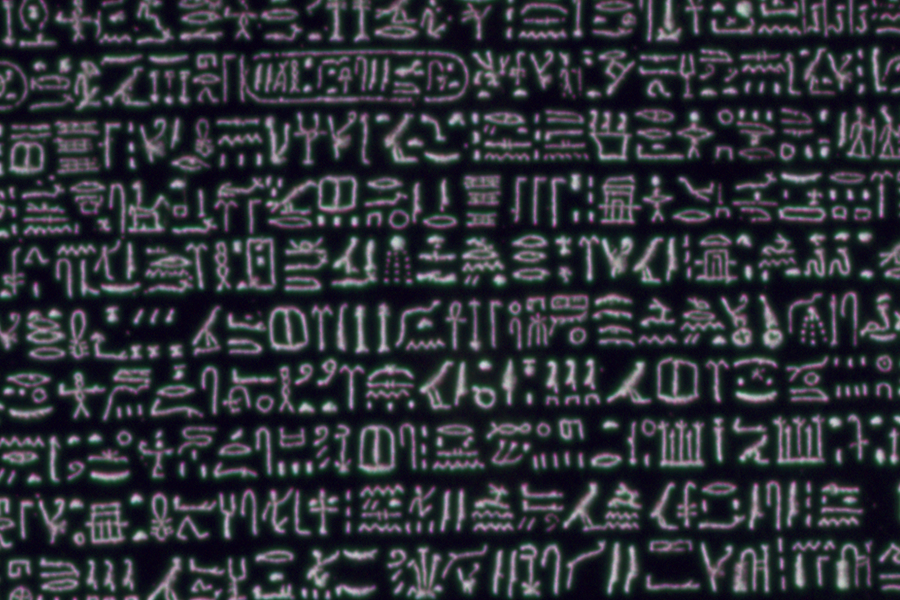
Professor, University of Kentucky; C3 Framework Lead Author; Lead Consultant on Traverse
Kathy Swan is a professor of curriculum and instruction at the University of Kentucky. Kathy was awarded UKY’s Great Teacher Award in 2021 and has been a four-time recipient of the National Technology Leadership Award in Social Studies Education, innovating with inquiry-based curricula. Dr. Swan served as the project director and lead writer of the College, Career, and Civic Life Framework for Social Studies State Standards (2013), the national standards for social studies. She has co-written a number of best-selling books, including Inquiry-Based Practice in Social Studies Education: The Inquiry Design Model (2017), The Inquiry Design Model: Building Inquiries in Social Studies (2018), and Blueprinting an Inquiry-Based Curriculum: Planning with the Inquiry Design Model (2019).
August 2024
Educators in Imagine EdgeEX can now bypass an activity so a student can temporarily skip it and continue in the course.

August 2024
Educators in Imagine EdgeEX can now add lessons to a course, section, or enrollment even if a course is in flight, giving them unprecedented flexibility to customize course content to meet their students’ needs.
